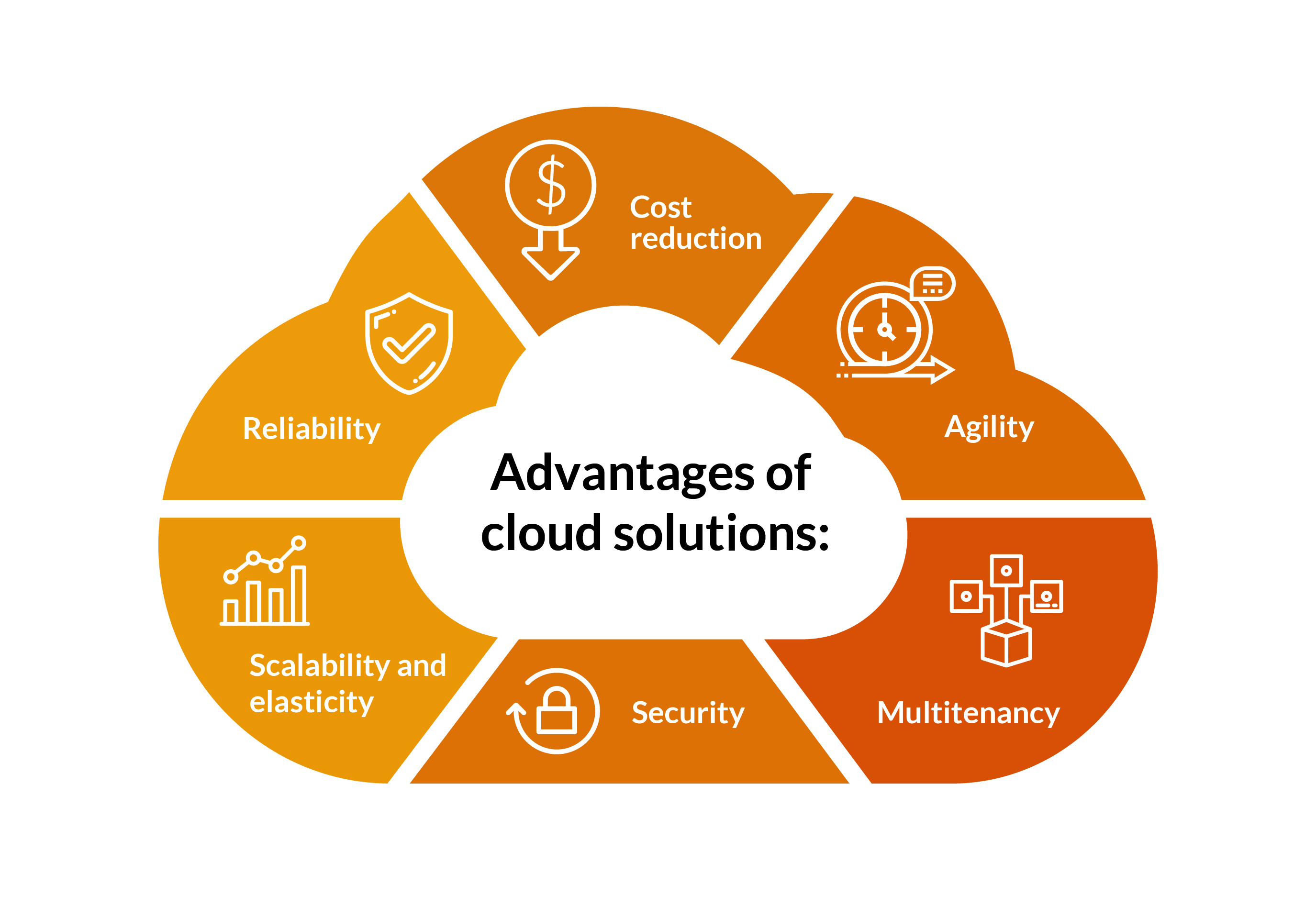Streamline IT Management With Cloud Provider
Cloud solutions have emerged as a viable remedy for businesses looking to boost effectiveness, decrease prices, and enhance overall IT performance. How precisely do these cloud solutions change standard IT administration methods? Let's check out the transformative effect of leveraging cloud solutions on IT operations and the vital factors to consider for successful implementation.
Advantages of Cloud Services

Additionally, cloud services make it possible for organizations to enhance their operational efficiency by improving procedures and decreasing the time and sources needed for managing IT infrastructure. With cloud services, services can automate regular tasks, such as software application updates and data backups, liberating IT teams to concentrate on even more critical campaigns that drive business worth.

Boosted Scalability and Adaptability
Cloud solutions supply services with exceptional scalability and adaptability in managing their IT resources efficiently. Scalability is a crucial feature of cloud solutions that permits firms to quickly adjust their IT sources based on demand. With cloud services, services can swiftly scale up or down their computer resources, storage space capacity, and network transmission capacity to fulfill changing requirements without the need for considerable in advance investments in equipment. This adaptability allows organizations to adjust to fluctuating work, seasonal needs, or unanticipated development without experiencing downtime or performance issues.
In addition, cloud services give the adaptability to pick from a selection of service models, such as Infrastructure as a Service (IaaS), System as a Service (PaaS), or Software as a Service (SaaS), based on the specific demands of the service. The enhanced scalability and versatility provided by cloud services equip services to maximize their IT procedures and stay agile in today's vibrant market environment.
Cost-Effectiveness and Financial Savings
With the capacity to effectively designate sources based on demand, services using cloud services can harness substantial cost-effectiveness and recognize substantial cost savings in their IT procedures. Cloud services supply a pay-as-you-go version, permitting companies to only spend for the sources they use, getting rid of the demand for large in advance financial investments in equipment and software. This scalability makes certain that businesses can easily adjust to changing needs without spending beyond your means on unnecessary sources. Additionally, cloud services lessen maintenance prices by changing the responsibility of equipment upkeep and software application updates to the provider. This lowers the requirement for specialized IT staff to take care of facilities, more reducing functional expenses. The cloud offers economic situations of range, with service providers spreading out prices throughout several customers, resulting in reduced individual prices for solutions like storage space and computer power. Generally, the cost-effectiveness and savings achieved with cloud services enable organizations to reallocate resources in the direction of innovation and development initiatives.
Improved Safety And Security and Conformity
Enhancing the total security stance and making certain regulative compliance are critical factors to consider for businesses leveraging cloud solutions in their IT administration strategies. Cloud provider supply sophisticated safety and security measures, such as data encryption, multi-factor verification, and automated backups, which can boost a firm's protection structure. These carriers likewise follow strict governing requirements, such as GDPR, HIPAA, and PCI DSS, helping services fulfill compliance requirements better.
Applying cloud services can enhance protection by offering systematized control over access management, surveillance, and data security. This centralized strategy simplifies safety and security monitoring and guarantees regular application of security policies throughout the company. Cloud solutions usually use real-time safety updates and patches, lowering the risk of vulnerabilities and potential breaches.
Best Practices for Cloud Application
Implementing cloud services successfully calls for a structured technique that includes complete planning and diligent implementation. To guarantee a smooth change to the cloud, companies ought to start by carrying out a thorough analysis of their existing IT framework and recognizing which workloads are appropriate for movement. It is vital to develop clear purposes and specify essential performance indicators (KPIs) to gauge the success of the cloud implementation.
One of the most effective methods for cloud application is to very carefully pick a cloud provider that lines up with the company's requirements in terms of safety and security, compliance, cost-effectiveness, and scalability. Furthermore, developing an check that in-depth migration strategy that describes the actions involved, timelines, and duties is critical for an effective implementation.
Consistently keeping an eye on and enhancing cloud resources to make certain efficient performance and price management is another essential facet of cloud execution finest techniques. Continuous analysis of the cloud setting and remaining notified about updates and new functions visit here provided by the cloud company can further boost the company's cloud strategy. By complying with these finest methods, organizations can enhance their IT management and maximize the benefits of cloud solutions.
Final Thought
To conclude, leveraging cloud solutions for IT administration supplies many advantages, including improved scalability, cost-effectiveness, enhanced security, and compliance. By following ideal techniques for cloud application, organizations can enhance their IT operations, automate routine tasks, and enhance source allowance. This structured approach enables IT groups to concentrate on critical initiatives and technology, inevitably delivering value to the company. In general, cloud solutions boost functional performance and dexterity in handling IT infrastructure.
Additionally, cloud solutions supply the flexibility to choose from a range of service designs, such as Framework as a Service (IaaS), Platform as a Solution (PaaS), or Software as a Service (SaaS), based on the specific requirements of the service. In addition, cloud solutions lessen maintenance costs by moving the duty of equipment maintenance and software program updates to the solution company.Enhancing the total protection stance and guaranteeing regulatory conformity are paramount considerations for companies leveraging cloud services in their IT monitoring methods.Frequently maximizing and keeping an eye on cloud resources to ensure reliable performance and cost administration is one more important facet of cloud execution see this best practices. Continual evaluation of the cloud atmosphere and staying educated concerning updates and new features offered by the cloud copyright can even more improve the company's cloud method.